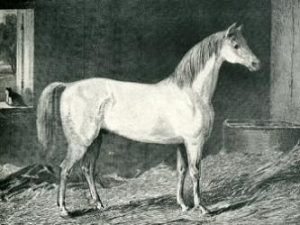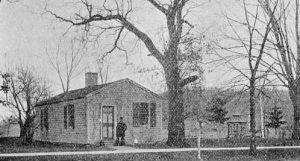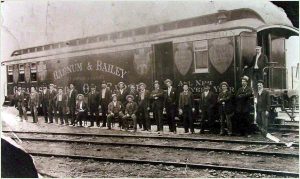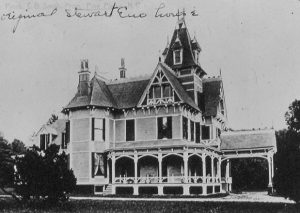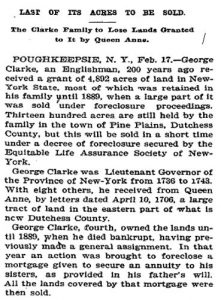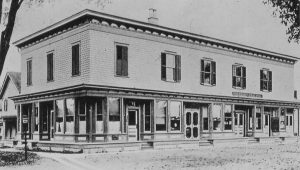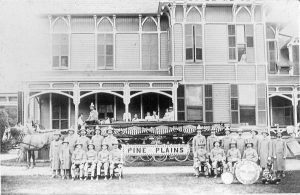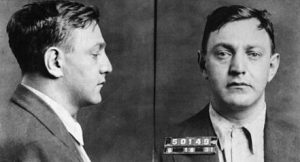They say looks can be deceiving, and that goes for towns, too. Pine Plains may appear at first glance to be just your ordinary, quiet little country town. Certainly, it is more scenic than most, but otherwise seems rather commonplace. It almost shouts out, “not much happened here!” and yet, if we were to step back in time, we would find that much did happen here, making Pine Plains far from ordinary.
Pine Plains Firsts
Pine Plains can lay claim to some impressive “firsts” for a town of its size and location:
- 1742 first Christian congregation of Native Americans in present-day United States, established by Moravian missionaries at the Mahican village of Shekomeko.
- 1798 first public library in Dutchess County.
- 1931 first centralized school district in Dutchess County.
- 1936 first zoning committee established in New York State to consider passing a zoning ordinance in a rural township (but Pine Plains was the last town in Dutchess County to adopt one, in 2009!).
- 1996 first public library in Dutchess County to have a website.
- 2013 first seed library in Dutchess County.
How many of these “Fun Facts” and unique things about Pine Plains do you know?
- Stissing Mountain, the town’s most visible landmark at 1,403 feet, is a unique geological formation, a block of 1.1-billion-year-old Precambrian gneiss “floating” on top of younger shale and sandstone.
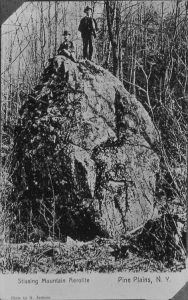
Stissing Mountain glacial erratic --not aerolite (meteorite)
- Thompson Pond, part of the Nature Conservancy, is a special type of wetland called a circumneutral bog lake. It is home to New York’s smallest turtle, the endangered bog turtle, and is the source of Wappinger Creek, a major tributary of the Hudson River and largest watershed in Dutchess County.
- Tschoop, one of the “first fruits” (first converts) of the Moravians at Shekomeko, is believed to be the model for Chingachgook in James Fennimore Cooper’s “The Last of the Mohicans”.
- The Graham-Brush House, dated 1750-1770, is one of earliest surviving log structures in the Hudson Valley and the oldest house in the Pine Plains hamlet. It is owned by the Little Nine Partners Historical Society.
- Horse breeding has a long tradition in Pine Plains. Perhaps the most important early American Thoroughbred stallion, Messenger, stood here for several years after his part-owner Cornelius W. Van Ranst brought him to his Pine Plains farm in 1796.
Messenger was the grandsire of the famous undefeated champion, “American Eclipse”. He is the foundation sire to several breeds developed in America: the Standardbred, American Saddlebred, and Tennessee Walking Horse.
- Speaking of horses…horse racing was also big here in the early 1800s and Pine Plains even had its own racetrack, which was located on the empty lot between Stissing Avenue and Lake Road.
- The Stissing House, originally a log tavern built by Captain Cornelius Elmendorph in 1782, has one of the few early domed ballrooms in the country, as well as a rare form of Dutch colonial framing. It is one of the oldest continuously-operating inns in America.
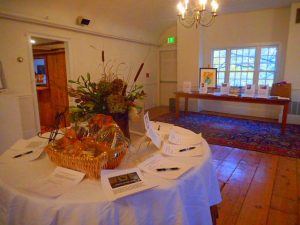
Domed Ballroom at the Stissing House. Image courtesy of Dyan Wapnick. Although Washington never slept here, a long-standing rumor is that the Marquis de Lafayette did during his 1824 visit to the US, but this is highly unlikely given his well-documented tour itinerary.
- When Stissing National Bank merged with Bank of Millbrook in 2010, it had been in operation for 171 years (beginning as Pine Plains Bank) and was at that time the oldest business in Pine Plains.
- Built in 1814, the Eno Law Office is one of the oldest free-standing law offices still in existence in New York State.
- Pine Plains is rumored to have been a stop on the Underground Railroad. Although no evidence of this has yet been found, the Presbyterian Church’s minister from 1833-1883, The Rev. William N. Sayre, was a member of the Dutchess County Anti-Slavery Society.
- Pine Plains at one time had two news weeklies, The Pine Plains Herald (1859-1926), and The Pine Plains Register (1882-1926).
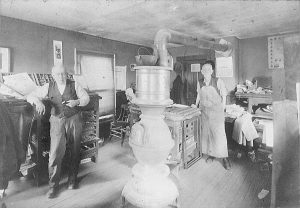
Interior of old Herald Print Shop Samuel Hoag, long-time publisher and editor of the Herald, was called the “Dean of Dutchess County editors”, and Charles S. Wilber, publisher of the Register, was called the oldest newspaperman in Dutchess County, and perhaps the Hudson Valley, when he died in 1925 in his 85th year. The newspapers merged in 1926 as The Register-Herald, which folded in 2009, ending 150 years of newspapers in Pine Plains.
- In the late 1800s, Barnum and Bailey Circus boarded show animals over the winter at local farms for $5/month per animal, with a circus employee boarding with the farmer for $10/month.
- John H. Righter, whose game company Selchow & Righter had its first big commercial success with the manufacture of Parcheesi in the late 1800s, had Pine Plains roots.
- Seymour Smith Institute, a co-educational boarding school, opened in 1879, the bequest of Seymour Smith. Unique for a rural community at the time, it was noted for its academic excellence and attracted students from as far away as South Carolina. The Pine Plains location was touted for its healthy climate, “free from every form of malarial disease” and “far removed from the temptations incident to large towns and cities.” Closed in 1896, it reopened as Seymour Smith Academy, a union free school and teacher training school. It was torn down in 1932 to make way for the new central school.
- The Pines, the grandest building in Pine Plains, was built in the Stick-Eastlake style in 1878 by lawyer William S. Eno.
The house had many modern conveniences not yet found in the typical home, such as gas-operated fixtures and indoor plumbing. It became a hotel during the resort era of the early 1900s, but passed out of the family in 1905 due to Eno's investment firm scandal.
- Pine Plains was the early home and is the final resting place of New York State Senator and first Democratic mayor of Poughkeepsie, George Morgan (1816-1879).
 Unfortunately, scandal overshadowed his many accomplishments. He was implicated by “Boss” Tweed in his famous 1877 confession, where Tweed claimed to have bought Morgan's and other politicians’ votes. Morgan Lake in Poughkeepsie was built by him.
Unfortunately, scandal overshadowed his many accomplishments. He was implicated by “Boss” Tweed in his famous 1877 confession, where Tweed claimed to have bought Morgan's and other politicians’ votes. Morgan Lake in Poughkeepsie was built by him.
More about Morgan Lake: http://morganlakepoughkeepsie.blogspot.com/2012/04/oh-how-sickly.html
- In 1895 the last remaining lot of the Little Nine Partners Patent (Lot 47) was subdivided and sold at auction from the steps of the Stissing National Bank, the final process of liquidating the New York holdings of the Clarke family that had begun in 1889 after George Clarke IV, a direct descendant of George Clarke, one of the original nine partners, went bankrupt.
This lot had been held intact as leaseholds by the Clarke family for over 150 years, impeding development of the entire west side of Main Street. News of the auction made The New York Times.
- Pine Plains once had an opera house! The Bowman Opera House, built in 1895, was where the pharmacy is now. The upper floor was used for the performances. The masquerade balls here were legendary.
- Few small volunteer fire companies dating from the 1800s can boast still having any original fire apparatus, but Pine Plains Fire Company has two.
The hand-drawn hose cart, purchased in 1896 for $24, was meant to be pulled by six men and hooked up to a hydrant (Pine Plains having recently installed a water works). The hook and ladder wagon, purchased in 1899 for $200, could be pulled by men or a team of horses.
- There were 18 trains on three railroads going in and out of the town daily during the railroad’s peak years in the early 1900s. While the trains carried passengers, the hauling of iron ore, followed by milk, were the leading sources of income. After the demise of the railroads in the 1930s, the tracks were pulled up and sold as scrap to Japan.
- Memorial Hall was a gift in 1914 to the town by philanthropist Mary Ellen Lapham Saunders in honor of her maternal grandparents, John and Elizabeth McIntyre, with whom she had lived as a child in Pine Plains, and their children. In 1935 the building was converted into a movie theatre and became a testing site for first run films before they were debuted in New York City. In 1959 it was the original proposed site for Mid-Hudson Library System, but Poughkeepsie was chosen instead.
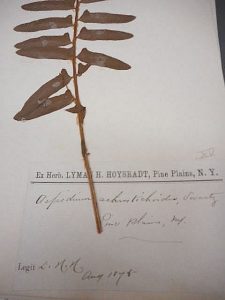
- Hartwick College in Oneonta, N.Y. is home to the Hoysradt Herbarium, a collection of over 20,000 pressed plants, many of them rare specimens from Pine Plains, collected by amateur botanist and local resident Professor Lyman Henry Hoysradt. It was donated to the college after his death.
- Hoysradt's other love was peonies. His peony gardens at his home in Pine Plains, Maplewilde Peony Gardens, which had 400 varieties of peonies and over 50,000 plants, were famous. Around 1910 he opened the gardens up for tours. Mrs. Vincent Astor, Mrs. Oakleigh Thorne, and Mrs. Andrew Carnegie were some of the society people of the day who visited.
- The clock tower was dedicated in 1920 to the memory of Dr. Henry Clay Wilber for his 52 years of service to the town. In addition to his private practice, Dr. Wilber was the town health officer for 33 years, coroner for 15 years, charter member and president of the Dutchess County Medical Society, and member of the New York State Medical Society. Quite a resume for a rural doctor!
- Bootlegger and racketeer Dutch Schultz (real name Arthur Simon Flegenheimer) ran an underground distilling operation at Harvest Homestead Farm here during Prohibition, taking advantage of the area’s isolation. It was raided in 1932. Schultz was later gunned down by the mob hit squad, Murder, Inc. at the Palace Chophouse in Newark, New Jersey in 1935. He was 33.
- The former Deuel’s hardware store was a coal and feed business and lumber yard operated by Samuel Deuel in the early 1900s.
The 8-ton platform scale at the weigh station out by the road is still functional and was used mostly to weigh bulk items by the truckload, such as coal, before they came prepackaged in standard-sized bags. The scale was made by Pennsylvania Scale Company which is still in business!
- A roller-skating rink was built in Pine Plains in 1885. It was one of the first in the area. Skaters came from all over the county to compete here. Barrel jumping was a particular favorite. Figure skating was also popular. The building was later moved in stages to its present location on South Main Street, becoming the main building for Samuel Deuel's business and later Deuel's hardware store.
- Briarcliff Farms once supplied stock for 95% of the Angus beef cattle in the U.S. It all began in 1907, when Walter Law relocated his massive dairy operation to Pine Plains from Westchester County. Within 3 months he bought up 12 local farms on both sides of present-day Route 82, totaling 3249 acres. In 1918, Oakleigh Thorne purchased Briarcliff and changed over to raising prized Aberdeen Angus cattle.
- Jerry Herman, the American composer and lyricist ("Hello, Dolly!", "Mame", etc.) spent all his summers from age 6 to 23 at Stissing Lake Camps in Pine Plains, which his parents ran, from being a camper to becoming the camps' Musical Theater Director.
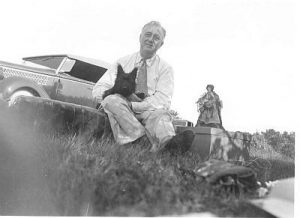
President Roosevelt with 4-month old Fala (and a doll gift) on "Sunset Hill", Pine Plains, 1940
- President Franklin D. Roosevelt liked to come out to Pine Plains from his home in Hyde Park, taking scenic drives around the lake and picnicking here.
- The Pine Plains chapter of Future Farmers of America is one of only three chapters in Dutchess County.
- Pine Plains’ diverse ecology is featured in the Felix M. Warburg Memorial Hall (dedicated 1951) at the American Museum of Natural History in New York City.

Most notable is the striking diorama called, “An October Afternoon Near Stissing Mountain”. Dr. Harry L. Shapiro, a Pine Plains summer resident and head of the museum’s department of anthropology, had a leading role in planning this exhibit.
Sources:
The Pine Plains Register, The Pine Plains Herald, and The Register-Herald

